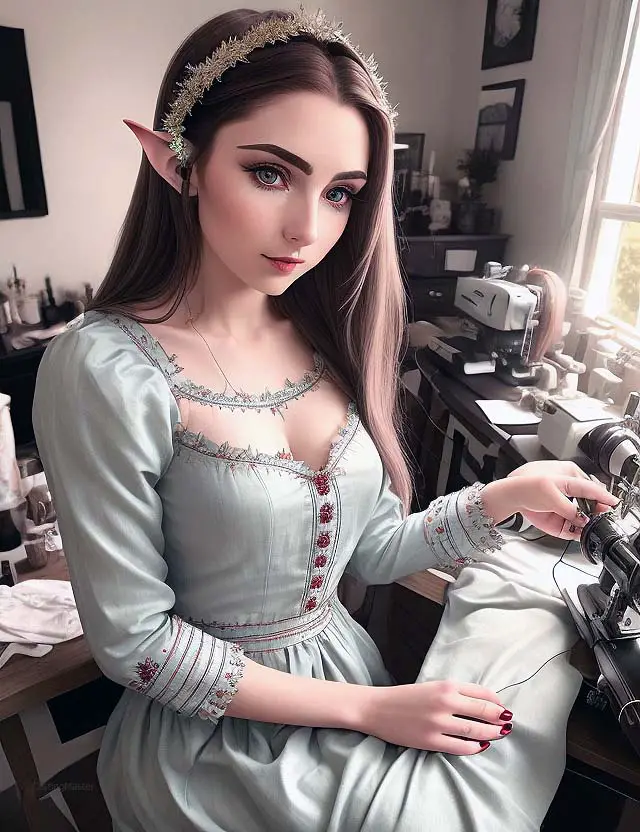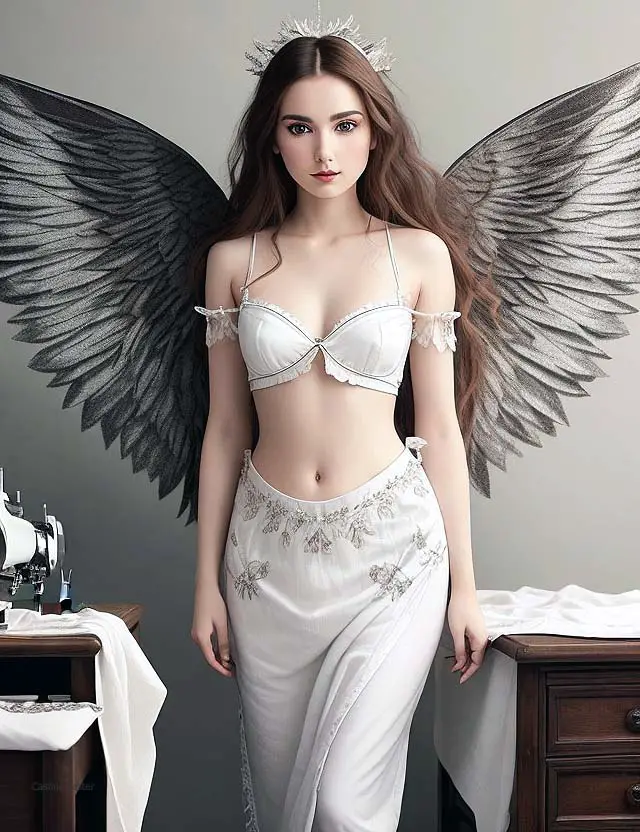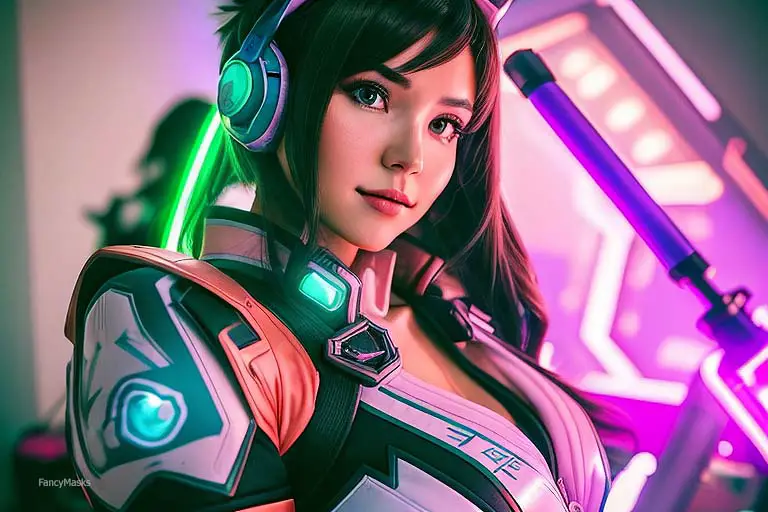Cosplay, short for costume play, is a popular hobby enjoyed by many people around the world. It involves creating costumes inspired by characters from various media such as video games, anime, movies and comic books.
One of the most crucial aspects of cosplay is fabric selection. Choosing the right fabric can either make or break your costume.
The type of fabric you use affects not only the look and feel of your costume but also its durability and comfort. Using incorrect fabric can result in a poorly fitting or flimsy costume that doesn’t hold up well over time.

The Importance of Fabric Selection
Fabric selection is essential because it affects both the appearance and functionality of your final product. Factors like texture, color, weight, breathability will impact how your costume looks and feels while factors like strength and durability will impact how long it lasts.
It’s important to choose fabrics that are appropriate for both the character you’re portraying and the environment you’ll be wearing it in. For example, if you’re making a beach-ready cosplay outfit, you’ll want fabrics that are lightweight and breathable to keep you cool under the sun.
How Fabric Affects Overall Look
The type of fabric chosen plays an important role in determining how authentic your cosplay outfit looks when compared to the original character design from which it was inspired. If so desired, an avid cosplayer should take time studying pictures or videos from source material to make sure they recreate their chosen character’s outfit accurately.
A person dressed as Superman might need bright blue spandex to achieve his iconic appearance as opposed to using regular blue cotton. Moreover, using specific materials may help bring out certain aspects that are integral parts of a character’s look; such as using leather-like fabrics for biker characters or metallic shiny materials for space-themed characters.
How Fabric Affects Overall Feel
The comfort of the cosplay outfit is also an important factor to consider. The wrong type of fabric can make the outfit too hot, itchy, or uncomfortable. For comfort, it’s best to choose fabric that is breathable and lightweight.
Cosplay events often require wearing an outfit for long periods of time so choosing the right fabric becomes very important. A well-made cosplay costume should not only look good but also feel comfortable to wear for extended periods of time.

The Connection Between Fabric Choice and Character Fidelity
The most successful cosplays are those that are truest to the original material’s aesthetic. Often times this means choosing a specific fabric type that most closely resembles what is seen on screen or in print. For example: if you’re trying to bring Marge Simpson or Chucky Finster come alive through cosplay, not only will you need expert styling techniques for hair/makeup but you’ll also need a fabric selection for their iconic outfits so they’re easily recognizable by anyone familiar with the characters.
selecting the correct fabrics has a significant impact on how your final product looks and feels as well as its ability last over time. Cosplay enthusiasts should carefully consider these factors when choosing their fabrics in order to bring their costumes as close as possible to matching their source materials while still being comfortable enough for extended wear at conventions or other events
Understanding Fabric Types
Different types of fabrics commonly used in cosplay
When it comes to cosplay, fabric selection is everything. Your choice of fabric can make or break the entire look and feel of your costume.
There are a variety of different fabrics that are commonly used in cosplay, including cotton, polyester, silk, and more! It’s important to understand the properties and characteristics of each type so that you can make an informed decision when selecting fabrics for your project.
Characteristics and properties of each type
Cotton: This is one of the most common fabrics used in cosplay. It’s a natural fiber that has a soft texture and is highly breathable. Cotton is also very durable and easy to work with.
However, it can wrinkle easily and may not hold its shape as well as other fabrics. Polyester: This synthetic fiber is another popular choice for cosplay costumes.
It’s lightweight, easy to care for, and has good durability. Polyester also holds its shape well but may not be as breathable as other fabrics.
Silk: This luxurious fabric is often used for high-end costumes due to its beautiful drape and texture. Silk is very breathable but requires special care when washing or cleaning.
Satin: Satin is a shiny fabric that gives off a glamorous look but can be difficult to work with due to its slippery texture. It’s not very breathable either but does have good durability.
Faux Fur: Faux fur is often used for animal-themed costumes or accessories like hats or bags. It has great texture but can be difficult to sew due to its thickness.
It’s important to note that these are just a few examples of the many types of fabrics available for cosplaying! Each type has its own unique properties and characteristics that should be considered when selecting fabrics for your costume.
Choosing the Right Fabric for Your Character
One of the most important aspects of cosplay is bringing a character to life, and fabric selection plays a crucial role in achieving this goal. When selecting fabric for your cosplay project, it’s important to keep the character’s personality and style in mind. For example, if you’re cosplaying a character who is known for being tough and rugged, you may want to use heavier fabrics like denim or leather to convey that vibe.
On the other hand, if your character is more elegant and refined, you may want to opt for lighter fabrics like silk or chiffon. In addition to considering your character’s personality, it’s also important to take their style into account.
If your character wears clothing with intricate patterns or designs, you may want to choose fabrics with similar details. This will help bring authenticity to your cosplay and make it clear who you are portraying.

Matching Fabrics with Specific Design Elements
In order to create a cohesive look for your cosplay project, it’s important to match fabric with specific design elements. This includes things like texture, color, and even fabric weight.
If your character wears clothing with a lot of texture or pattern, consider using fabrics that have similar features. For example, if your character has a plaid shirt on in their reference image then choosing cotton plaid fabric would be ideal.
When it comes to color choice make sure that the color matches as closely as possible by comparing swatches or reference images under different lighting conditions such natural light vs indoor light. Be mindful of how colors can appear different depending on lighting conditions especially at conventions where lighting varies greatly from booth-to-booth.
You can also use fabric weight as part of matching design elements as well! If the clothing of the character has a lot of fullness or draping, consider using fabrics that have a similar weight and drape such as chiffon or silk. When you are creating armor, sometimes thermoplastic is a far better option than fabric. We’ve created an introduction to cosplay thermoplastic.
On the other hand, if your character has more structured clothing then using heavier fabrics that hold their shape like cotton twill could be ideal. Once you have a general idea of the fabrics you want to use, it’s important to test them out before making any big decisions.
Try draping fabric over your body or holding it up to your face to see how it looks and feels. Remember, the right fabric can make all the difference in bringing your cosplay project to life!
Choosing the right fabric for cosplay can be challenging but also an enjoyable part of creating a costume. By considering the character’s personality and style as well as matching specific design elements with various fabric properties, you’ll be able to create an authentic cosplay that truly brings your favorite character to life! If you’re looking for other types of cosplay crafting, check out our full guide.
Fabric Shopping Tips
Where to find quality fabrics for cosplay
One of the greatest challenges when it comes to fabric shopping is finding good quality materials. When looking for fabric stores, try to avoid big box or chain stores, as the selection may be limited and the prices high. Instead, look for local fabric shops and specialty stores that cater specifically to the cosplay community.
These types of stores often carry higher quality fabrics and can provide helpful advice on selecting the right material for your project. Another great option is online fabric retailers.
Many online stores offer a wide variety of fabrics at competitive prices. However, be sure to read reviews and check return policies before making any purchases.
Additionally, attending conventions or expos can be a great way to find unique fabrics and materials. Many vendors will sell specialized fabrics specifically designed for cosplay use, such as stretch vinyl or faux leather.

How to shop on a budget without sacrificing quality
Cosplay can quickly become an expensive hobby, but there are ways to save money without sacrificing quality. One solution is by purchasing remnants or scraps from specialty fabric shops.
These smaller pieces are often sold at discounted prices but may be perfect for small projects or details. Another way to save money is by watching out for sales and promotions at local fabric shops or online retailers.
Sign up for email newsletters from these companies so you’re always in-the-know about discounts and sales events. Thrift stores can also be a treasure trove of materials for cosplay projects.
Look through racks of clothes with an eye towards fabric composition rather than style – shirts made from cotton or linen may make perfect costumes! Consider using unconventional materials like bedsheets or curtains as cosplay fabrics – these items can often be found cheaply secondhand (or even lying around your house!) and repurposed into amazing costumes with some creative touches.
Finding quality fabrics for cosplay is possible with a little bit of extra effort. Don’t be afraid to think outside the box and try new materials – you may be surprised at what works!
Fabric Preparation Techniques
Preparing fabric before cutting and sewing
Before beginning your cosplay project, it’s important to prepare your fabric properly to ensure the best outcome. The first step is to prewash your fabric. This helps remove any sizing or chemicals that may have been added during manufacturing.
You don’t want these substances interfering with the dye, paint, or other treatments you plan on using later. Just be sure to read the care instructions on the fabric label before washing, as some fabrics require special attention.
Once your fabric is clean and dry, it’s time to iron it. Ironing helps smooth out any wrinkles and creases that may have formed during washing or storage.
It also flattens the fabric so it’s easier to cut and sew. Be sure to use a low heat setting for delicate fabrics like silk or chiffon, as they can easily scorch.
Best practices for washing and ironing fabrics
When washing your cosplay fabric, always follow the care instructions on the label. Some fabrics can be machine washed on a gentle cycle while others should be hand washed only. Additionally, certain types of detergent may be too harsh for delicate fabrics like silk or lace.
After washing your fabric, avoid wringing it out too tightly as this can cause stretching and damage the fibers. Instead, gently squeeze out excess water and then hang dry if possible (using clothespins or hangers).
If you must use a dryer, use a low temperature setting to avoid shrinkage. Ironing is an important step in preparing your cosplay fabric for cutting and sewing.
Be sure to use a clean iron with no residue from previous projects (you don’t want any leftover glue or paint transferring onto your new project!). It’s also helpful to use a pressing cloth between the iron and delicate fabrics like satin or velvet.
Overall, taking care in preparing your cosplay fabric will lead to a better end result. By washing and ironing your fabric properly, you’ll avoid any surprises like shrinkage or distortion during the creation process.

Advanced Techniques: Dyeing and Painting Fabrics
How to dye or paint fabrics to achieve desired colors or effects
Dyeing or painting fabrics can be a daunting task, especially if you’re new to it. However, with the right materials and a little bit of patience, you can create stunning effects that will make your cosplay stand out. Before starting, make sure to read the instructions on the package of your dye or paint carefully.
Here are some tips to help you get started: Firstly, choose the right fabric for your project.
Some fabrics are easier to dye than others, so choose a fabric that is appropriate for your skill level. Cotton and silk are great fabrics for beginners as they absorb dyes easily.
Secondly, prepare the fabric before dyeing or painting it. Wash it thoroughly in warm water and let it dry completely before starting.
This will remove any dirt or residue that could affect how the dye or paint adheres to the fabric. Thirdly, mix up your dye or paint according to the package instructions.
Make sure you have enough mixture to cover your entire piece of fabric evenly. When applying dye or paint onto fabric, use a brush or sponge applicator instead of dipping the entire piece of fabric into a bucket of dye/paint as this can lead to uneven coverage.
Safety precautions when working with dyes and paints
Working with dyes and paints requires careful attention as they contain chemicals that can be harmful when ingested or inhaled. Guide to cosplay painting is a great resource if you are starting out. Here are some safety tips when handling dyes and paints:
Always wear protective gloves and a mask when mixing and applying dyes/paints. Work in a well-ventilated area with plenty of fresh air circulation.
Do not eat, drink, smoke while working with dyes/paints as this can lead to ingestion/inhalation of hazardous materials. Dispose of leftover dye/paint responsibly, following the package instructions and local waste disposal guidelines.
In case of accidental ingestion or inhalation, seek medical attention immediately and contact a poison control center. When dyeing or painting fabrics, always remember to prioritize safety to prevent any accidents in your cosplay costume creation.
Conclusion
Recap of key points in selecting the right fabric for your cosplay project
Choosing the right fabric is crucial to the success of your cosplay project. It’s important to consider the character’s personality, style, and design elements when selecting fabric. Understanding the different types of fabrics and their properties will help you make informed decisions about what will work best for your project.
Take into consideration factors such as durability, breathability, texture, and color when choosing a fabric. When shopping for fabrics, be sure to look for quality materials that will withstand wear and tear.
You don’t want a costume that falls apart after just one wear! Preparing your fabrics before cutting and sewing is also important to ensure that they lay flat and don’t shrink or warp during washing.
If you need to dye or paint your fabrics to achieve desired colors or effects, be sure to follow safety precautions when working with dyes and paints. Experimenting with different techniques can add depth and authenticity to your costume.
Encouragement to experiment with different fabrics and techniques
Don’t be afraid to experiment with different types of fabrics and techniques! Cosplay is all about creativity and individuality. Try mixing different textures together, or using unconventional materials like foam or worbla for added dimension.
With each new cosplay project comes new challenges and opportunities for growth. Don’t give up if a certain technique doesn’t work out the first time – keep practicing until you get it right!
Remember that cosplay should be fun. At its core, it’s about expressing yourself through a shared love of fandoms.
So don’t stress too much about getting every detail perfect – focus on enjoying the process of bringing your favorite characters to life. Selecting the right fabric is an integral part of any successful cosplay project.
By understanding the properties of different types of fabrics and their effects on the overall look and feel of a costume, you can make informed decisions about what will work best for your project. Don’t be afraid to experiment with different fabrics and techniques, and most importantly, have fun!




